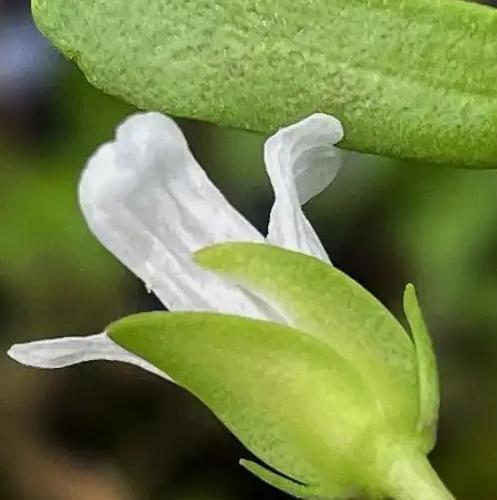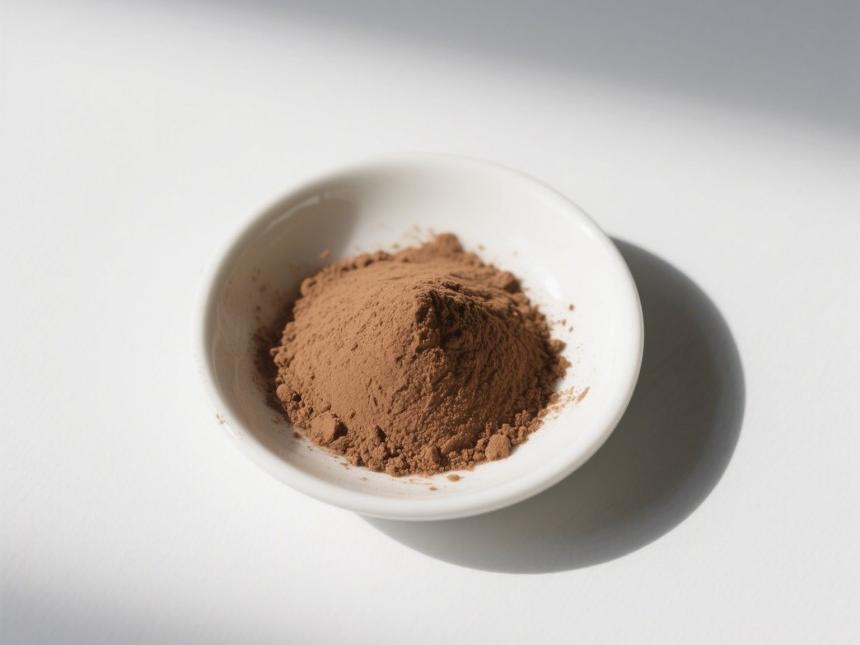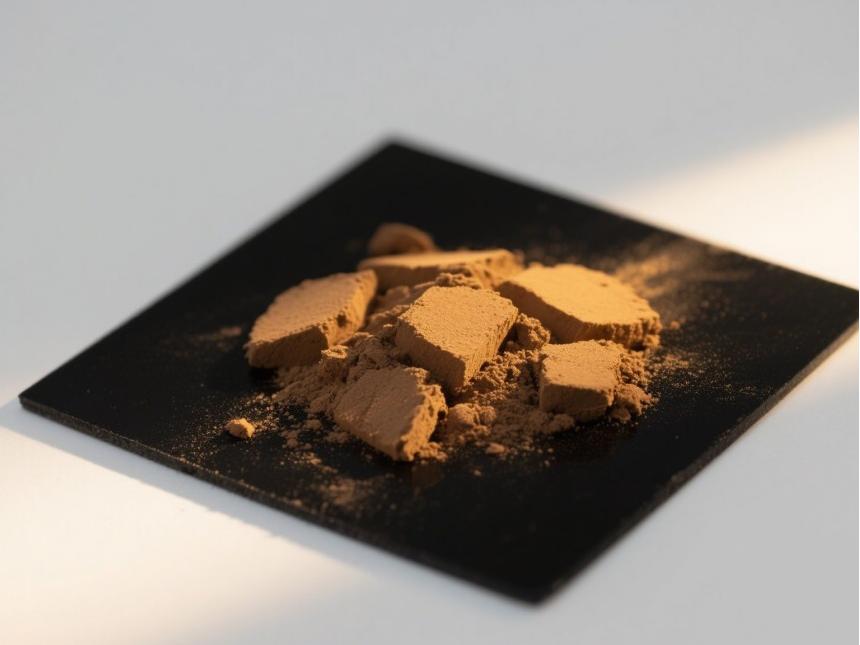Bacopa Monnieri Extract: Derived from Nature, Empowering Health Product Innovation
Bacopa monnieri (L.) Wettst. is a natural herbaceous plant native to tropical and subtropical regions, commonly found in natural environments such as watersides and wetlands. It is distributed across Fujian, Guangdong, Yunnan, and other areas in China. This plant boasts a long history of traditional use, while modern research continues to reveal its rich bioactive components and diverse health potential.
Leveraging sustainable botanical resources and advanced extraction technology, Green Spring Technology offers high-purity, stable Bacopa monnieri extract raw materials, providing customers with natural, reliable core ingredient solutions. This raw material is suitable for various health product sectors, including:
· Brain health and cognitive support products: Suitable for dietary supplements, functional tablets, and capsules;
· Mood balance and stress management products: Suitable for herbal formulations, solid beverages, and innovative formats like gummies;
· Antioxidant and holistic wellness products: Widely used in premium foods, beverages, and plant-based supplement development.
Green Spring Technology remains committed to providing standardized and customized Bacopa Monnieri extract raw materials, fully supporting product efficacy enhancement and differentiated innovation. We offer one-stop services from ingredient analysis and formulation recommendations to regulatory support, empowering brands to create next-generation health products with strong scientific backing and high market appeal.

1. Bacopa Monnieri Extract: Rich Active Compounds Lay the Foundation for Product Applications
Over 20 bioactive compounds have been successfully isolated and identified from Bacopa Monnieri, primarily triterpenoid saponins, providing robust scientific evidence for its application in health products.
1.1 Triterpenoid Saponins: Ongoing Discovery and Breakthroughs in Core Functional Components
Since the 1990s, triterpenoid saponins in Bacopa monnieri have emerged as a research focus. In 2001, researchers first isolated two triterpenoid saponins: Bacopaside I and Bacopaside II. Subsequently, additional new compounds were discovered, including Bacopaside III, IV, V, and the bioactive Bacoside A₃, continuously expanding the plant's chemical profile.
As early as 1995, researchers extracted three dammarane-type triterpenoid saponins—Bacopasaponin A, B, and C—from Bacopa monnieri and elucidated their chemical structures. Over subsequent years, additional congeners such as Bacopasaponins D through G were successively isolated and characterized, progressively refining the systematic research on this class of compounds.
Structurally, these triterpenoid saponins primarily comprise two major types: jujuboside aglycone-type and pseudojujuboside aglycone-type, collectively forming the core functional components of Bacopa monnieri extracts.
Green Spring Technology leverages modern extraction techniques and quality control systems to achieve efficient extraction and standardized control of triterpenoid saponins from Bacopa monnieri, ensuring consistency and stability across raw material batches.
1.2 Other Bioactive Compounds: Diverse Components Expand Product Innovation Potential
Beyond triterpenoid saponins, Bacopa monnieri contains various other bioactive compounds with practical applications, offering richer options for product formulation development.
Research indicates that compounds isolated from Bacopa monnieri include Bacoside A and its isomer Bacoside B, as well as the novel triterpenoid compound Bacosine, which exhibits soothing properties. Additionally, the sterol component Bacosterol and the active compound Bacogenin A have been successfully extracted, further broadening the plant's compositional diversity.
In 2002, researchers isolated multiple phenethyl glycosides from Bacopa monnieri, including Bacopaside A, Bacopaside B, and Bacopaside C. Subsequently, the Monnierasides I–III series were identified, collectively forming the complex bioactive component system of Bacopa monnieri extract.
Green Spring Technology employs advanced extraction and separation techniques to comprehensively preserve the diverse bioactive components in Bacopa monnieri, ensuring the integrity and synergistic efficacy of the raw material. These abundant natural components offer expanded innovation potential for brain health, emotional support, and holistic wellness products, particularly suited for developing premium dietary supplements, functional foods, and specialty health beverages.
2. Bacopa Monnieri Extract: Functional Ingredient Supporting Memory and Brain Health
Human studies demonstrate Bacopa Monnieri extract's positive potential for memory function. A clinically controlled study using scientific methods indicates this ingredient aids in enhancing retention of new information and supports the natural maintenance of memory.
Based on these findings, Green Spring Technology's standardized Bacopa Monnieri extract can be widely incorporated into formulations for products targeting enhanced brain health and improved memory performance. It is particularly suitable for dietary supplements, functional foods, and health beverages designed for adult populations.
3. Bacopa Monnieri Extract: A Premium Natural Ingredient for Emotional Wellness Formulations
Research indicates that standardized Bacopa monnieri extract holds positive potential in the realm of emotional health. Experimental evidence suggests this ingredient helps improve positive behavioral responses when facing challenges and supports the body's maintenance of multiple physiological indicators under stress.
Green Spring Technology's Bacopa monnieri extract, characterized by high active ingredient content (≥55% bacosides) and exceptional stability, is widely applicable in developing emotional balance health products. This ingredient is particularly suitable for functional foods, dietary supplements, and herbal formulations targeting stress relief and emotional well-being, offering modern consumers natural, science-based health solutions.
4. Bacopa monnieri Extract: A Scientific Choice for Stress Management Formulations
Scientific research demonstrates the significant value of standardized Bacopa monnieri extract in stress response. Experimental studies confirm this ingredient effectively supports the body's maintenance of multiple physiological indicators under stress, including adrenal function, energy metabolism, and related enzyme activity, with efficacy comparable to traditional premium botanical sources.
Green Spring Technology employs advanced extraction techniques to ensure high retention of active components and batch consistency in its Bacopa monnieri extract. This ingredient is suitable for developing products targeting stress management, emotional regulation, and overall wellness. It is particularly well-suited for functional foods, dietary supplements, and health beverage formulations, helping consumers naturally cope with modern life pressures.

5. Partner with Green Spring Technology to Co-create a New Future for Health Applications of Bacopa Monnieri Extract
As a natural plant with rich bioactivity, Bacopa Monnieri still holds immense development potential and market prospects in China. Green Spring Technology leverages advanced extraction and purification techniques to advance the modern application of this premium botanical resource. We provide standardized, high-potency purslane extract ingredients to drive innovation in the wellness industry. Learn More About Our Comprehensive Solutions for Traceable and Standardized Bacopa Monnieri Extract.
Through systematic sourcing and quality control of raw materials, combined with ongoing ingredient research and process optimization, Green Spring Technology ensures batch consistency and active ingredient efficacy. We deliver reliable core ingredient solutions for functional products targeting brain health, emotional management, and antioxidant support.
We sincerely invite clients in the health supplement, functional food, and beverage sectors to explore collaboration opportunities and jointly unlock the application value of false purslane extracts. Contact us today at helen@greenspringbio.com or WhatsApp: +86 13649243917 for complimentary samples, detailed product documentation, and competitive pricing to co-create next-generation health products backed by scientific evidence and market potential!
References
[1] Li Jiangling, Chen Xingfang, Sheng Guoping. Investigation and research on new medicinal plant resources of the Scrophulariaceae family in Sichuan Province [J]. Chinese Journal of Traditional Chinese Medicine, 1997, 22(6):329.
[2]CHAKRAVARTY AK,SARKAR T,MASUDA K,et al.Bacop a- side I and Ⅱ:two pseudoju jubogenin glycosides from Bacopamonniera[J].Phytochemistry,2001,58(4):553-556.
[3]CHAKRAVARTY AK,CARAIS,MASUDA K,et al.Bacopasides II-V:three new triterpenoid glycosides from Bacopa monniera [J].ChemPharmBull,2003,51(2):215-217.
[4]GARAJS,MAHATO SB,OHTANI K,et alDammarane-type trit- erpenoid saponins from Bacopa monniera[J].Phytochemistry, 1995,42(3):815-820.
[5]GARAIS,MAHATO SB,OHTANL K,et al.Bacopasaponin D-a pseudoju jubogeuin glycoside from Bacopa monniera [J].Phyto- chemistry,1996,43(2):447-449.
[6]MAHATO SB,GARAIS,CHAKRAVAR AK.Bacopasaponins E and F:two jujubogenin bisdesmosides from Bacopa monniera [J].Phytochemistry,2000,53(6):711-714.
[7]HOU cC,LIN SJ,CHENGIT,et al.Bacopaside IⅢ,Bacopasapo- nin G,and Bacopasides A,B,and C from Bacopa monniera [J].J Nat Prod,2002,65(12):1759-1763.
[8]AHMED B,BAHAR S,RAHMAN A.Bacosterol,a new 13,14-seco-steroid and bacosine, new triterpene from Bacopa monmierna[J].JChem,2000,39B(8):620-625.
[9]CHANDEL RS,KULSHRESHTHA DK,RASTOGI RP.Bacoge- nin A₃:a new sapogenin from Bacopa monniera[J].Phyto- chemistry,1977,16(1):141-143.
[10]CHAKRAVARTY AK,SARKAR T,NAKANE T,et al.New phe- nylethanoid glycosides from Bacopa monniera [J].Chem Pharm Bull,2002,50(12):1616-1618.
-
Prev
Optimized Extraction Process: Green Spring Technology's Passion Fruit Extract Empowers Food Innovation
-
Next
Bacopa Monnieri Extract Ingredient Fuels Innovation in Cognitive & Mood Support Products


 English
English French
French Spanish
Spanish Russian
Russian Korean
Korean Japanese
Japanese





